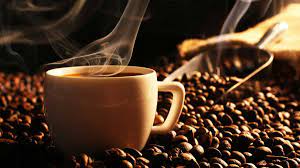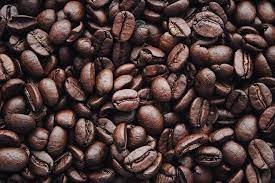Intense, with a tart-sweet note and extremely digestible – coffee from a dark roast, the so-called Dark Roast, is the favorite coffee of the Italians. And coffee lovers elsewhere also praise the aroma and tolerability of beans from this roasting process. But what exactly is the secret of Dark Roast? Mommy’s Caffè explains.

Dark Roast requires sensitivity from the coffee roaster
Outstanding coffee is characterized by one thing above all: its incomparable aroma. But that is no coincidence. In addition to the quality of the coffee bean, the way it is roasted is particularly important. Because it is a science in itself and the trademark of every passionate coffee roaster. In order to obtain a special taste and smell, roasting is about the ideal interplay of temperature and time.
A few seconds can decide the aroma and characteristics of the beans in the roaster. For the dark roast called Dark Roast, the coffee beans are heated for a particularly long time at a relatively high temperature. Special sensitivity is required here, because the beans should certainly develop a slightly smoky aroma. But of course you can’t burn them.
What happens when coffee beans are roasted?
When the coffee beans are heated, the water they contain is also heated.
It changes its physical state from liquid to gaseous.
This enlarges the bean.
Eventually the walls of the coffee bean will burst with a crack – similar to popcorn.
This is the first crack moment. Only then can the coffee be enjoyed. If the coffee roaster stops at this point, it is a so-called light roast.
For a medium or dark roast, the coffee roaster continues the roasting process.
Dark roasts usually remain in the coffee roaster until the second crack.
This is how dark roast coffee develops its typical character
Acids are broken down during roasting, i.e. the longer the bean is heated, the less acid it will contain in the end. Dark roasts are therefore particularly recommended for coffee lovers with a sensitive stomach. In dark roasting, the acids are replaced by bitter substances, which are responsible for the slightly tart taste of dark roasts.
In addition, the sugar in the coffee bean begins to caramelize during the roasting process. This gives dark roast coffee a sweet note, which – depending on the bean – is reminiscent of nuances of dark chocolate, hazelnut or caramel.
Apart from the taste: Have you ever noticed that beans from the dark roast process are not only particularly dark, but also very shiny? This is because the coffee bean releases oils through long, intense roasting. In addition, dark roasts contain less caffeine than medium or light roasts and can have positive health effects.
Degree of roast of coffee: From cinnamon roast to Italian roast
Dark roasts are particularly popular in southern Europe. Very dark roasts are therefore also called “Italian roasts”. The classification into degrees of roasting is common in the coffee industry, but it is handled differently. In German-speaking countries, the following gradations usually apply:
Light roast (cinnamon roast): high acidity, fruity, mild coffee taste
Medium Roast (American Roast): Balanced flavor
Strong roasting (Vienna roasting): strong roasted aroma
Dark roast (French roast): intense coffee taste
Very dark roast (Italian roast): strong body, slightly sweet, slightly bitter, low in acidity.
Grinding degree for a dark roast and more: tips for connoisseurs of the dark roast
In order to fully enjoy your Dark Roast coffee, make sure you use the correct degree of grinding for the dark roast. Rule of thumb: The darker the bean, the coarser you can set the grinding level. If you grind the dark roasted coffee beans too finely, too many bitter substances will be released. The result: a slightly burnt taste. Of course, the way you prepare your coffee is also crucial. Whether a portafilter, moka or French press can make a big difference here.
Once you have found the perfect degree of grinding, different coffee specialties can be conjured up from Dark Roasts. Of course, an espresso with an Italian roast is typical. Either pure or as the basis of a delicious flat white, cappuccino or latte macchiato. But dark roasts are also ideal for a strong filter coffee. Just try out which variant you like best!
